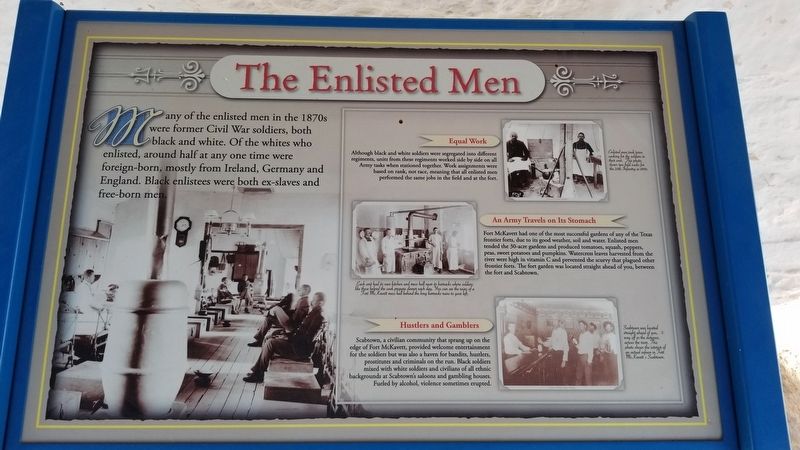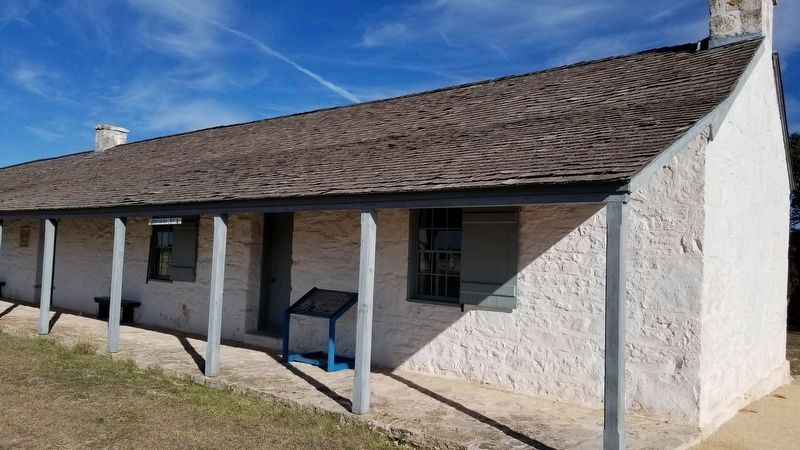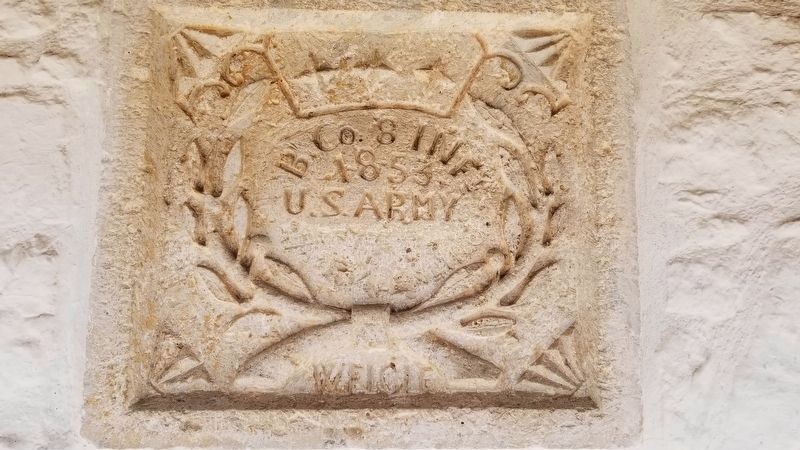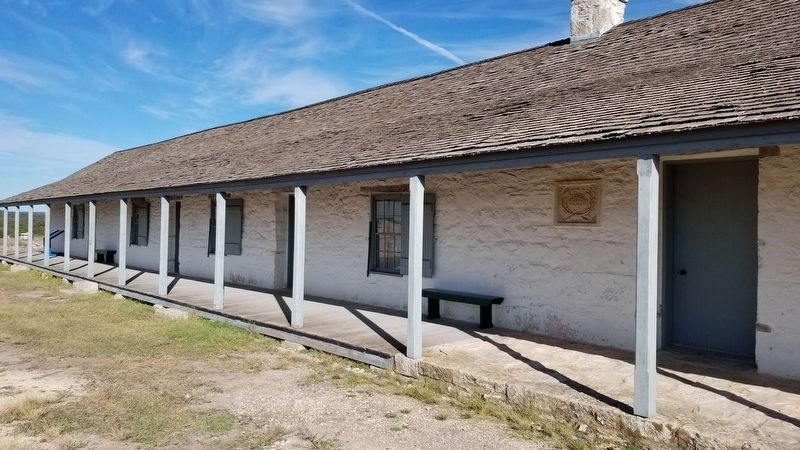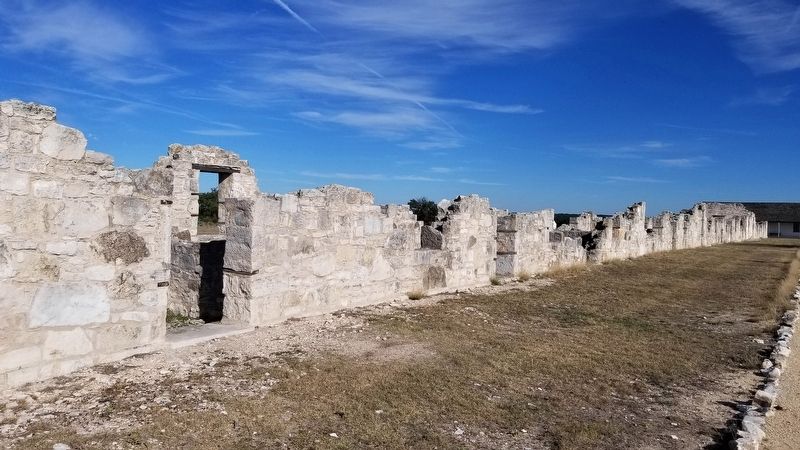Fort McKavett in Menard County, Texas — The American South (West South Central)
The Enlisted Men
Many of the enlisted men in the 1870s were former Civil War soldiers, both black and white. Of the whites who enlisted, around half at any one time were foreign-born, mostly from Ireland, Germany and England. Black enlistees were both ex-slaves and free-born men.
Equal Work
Although black and white soldiers were segregated into different regiments, units from these regiments worked side by side on all Army tasks when stationed together. Work assignments were based on rank, not race, meaning that all enlisted men performed the same jobs in the field and at the fort.
An Army Travels on Its Stomach
Fort McKavett had one of the most successful gardens of any of the Texas frontier forts, due to its good weather, soil and water. Enlisted men tended the 30-acre gardens and produced tomatoes, squash, peppers, peas, sweet potatoes and pumpkins. Watercress leaves harvested from the river were high in vitamin C and prevented the scurvy that plagued other frontier forts. The fort garden was located straight ahead of you, between the fort and Scabtown.
Hustlers and Gamblers
Scabtown, a civilian community that sprang up on the edge of Fort McKavett, provided welcome entertainment for the soldiers but was also a haven for bandits, hustlers, prostitutes and criminals on the run. Black soldiers mixed with white soldiers and civilians of all ethnic backgrounds at Scabtown's saloons and gambling houses. Fueled by alcohol, violence sometimes erupted.
Captions
Enlisted men took turns cooking for the soldiers in their unit. This photo shows two field cooks for the 25th Infantry in 1890.
Each unit had its own kitchen and mess hall near its barracks where soldiers like these helped the cook prepare dinner each day. You can see the ruins of a Fort McKavett mess hall behind the long barracks ruins to your left.
Scabtown, was located straight ahead of you, way off in the distance, across the river. This photo shows the interior of an actual saloon in Fort McKavett's Scabtown.
Erected by Fort McKavett State Historical Park.
Topics. This historical marker is listed in these topic lists: African Americans • Forts and Castles • Wars, US Indian. A significant historical year for this entry is 1890.
Location. 30° 49.642′ N, 100° 6.452′ W. Marker is in Fort McKavett, Texas, in Menard County. Marker can be reached from the intersection of Farm to Market Road 864 and Ranch to Market Road 1674. The marker is located in the northeastern section of the Fort McKavett State Historical Park. Touch for map. Marker
is at or near this postal address: 7066 FM 864, Fort Mc Kavett TX 76841, United States of America. Touch for directions.
Other nearby markers. At least 5 other markers are within 2 miles of this marker, measured as the crow flies. Buffalo Soldiers at Fort McKavett (within shouting distance of this marker); Cramped Quarters (about 300 feet away, measured in a direct line); Home on the Range (about 500 feet away); Site of Fort McKavett (approx. ¼ mile away); Colonel Black Ranch House (approx. 1½ miles away).
Also see . . . Fort McKavett.
Fort McKavett, is at the intersection of Farm roads 864 and 1674, twenty miles southwest of Menard in southwestern Menard County. It began in the 1850s as a community of civilians associated with a military post then known as Camp San Saba (not to be confused with Camp San Saba in McCulloch County). The civilian community, at a site about a mile north of the post, was supposed to be named Lehnesburg, in honor of a German merchant, but it was called Scabtown instead. When Camp San Saba closed in 1859, some civilians chose to remain, but most withdrew to more protected areas. After the military reactivated the post as Fort McKavett in 1868, the civilian community began to grow again and adopted the less obnoxious name of the new post. Source: The Handbook of Texas(Submitted on June 25, 2021, by James Hulse of Medina, Texas.)
Credits. This page was last revised on June 26, 2021. It was originally submitted on June 25, 2021, by James Hulse of Medina, Texas. This page has been viewed 138 times since then and 18 times this year. Photos: 1, 2, 3, 4, 5. submitted on June 26, 2021, by James Hulse of Medina, Texas.
